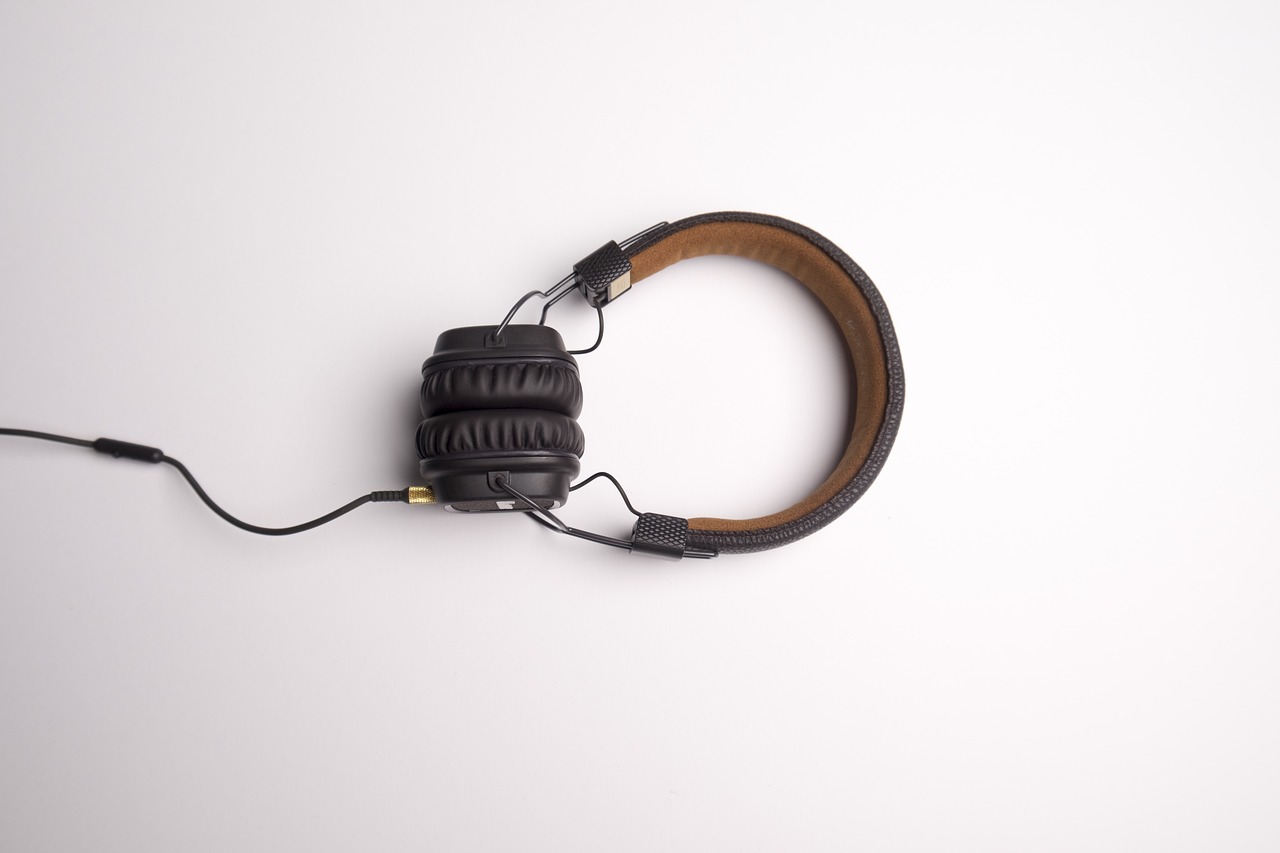Health
New Headphones have Released in Market to Help you Stay Focused

Mindset, a new pair of headphones in market, plays tunes while preventing outside distractions and training the brain to concentrate. After putting the headphones, the electroencephalogram (EEG) sensors embedded in the top of the headphones start to monitor brainwaves in real time. This measurements can tell when the mind is wandering and when it is focused. It plays a tone as soon as it realises the mind is slipping from the given task.
According to Jacob Flood, who is a co-founder of Mindset, with time the brain learns to recognize distractions on its own and tunes itself. That means the headphones won’t be required to do so. What Mindset focuses on is to improve concentration and ability to get into deep flow state needed to absorb complex materials. Mindset is also designed to detect dips in attention due to fatigue and provide suggestion on how long it will take the brain to recover from it.
Concentration ability has become a general issue on college campuses. In a study conducted on more than 10,000 college students, results showed that more than half of them were on prescribed Adderall or other ADHD drug. Flood claims that Mindset can help curb this prescribed drug abuse.
Mindset is not yet a medically-certified device. A Federal Drug Association (FDA) approval takes years. Flood said that seeking FDA approval isn’t their priority. For now they are focussed on Mindset reaching as many consumers as possible, teaching them how to train your brain and improve concentration.
The results of using Mindset headphones are mixed. Some studies pointed out that it is expensive, time-consuming and its benefits are not long-lasting. But Flood sees Mindset headphones being something students will keep in backpack or a worker may have on their desk to control subconscious, to use it as a tool to further education & to improve work life.
Health
Finding Your Best Fit: Are GLP-1 Medications Right for Your Weight Loss Journey?

Over the past few years, a class of drugs known as glucagon-like peptide-1 (GLP-1) receptor agonists has been gaining attention, not only for treating type 2 diabetes but also in the field of weight management.
With obesity affecting “at least one in five adults (20%) in each U.S. state,” according to the CDC, many individuals are seeking effective solutions that can complement diet and exercise. Two of the most discussed options are GLP-1 injections for weight loss and GLP-1/GIP for weight loss, both of which have shown promising results.
However, deciding if these medications are right for you isn’t a one-size-fits-all process; it’s essential to determine if GLP-1s are right for you to get you to be your best self in 2025. SimpleFixRx — a healthcare service dedicated to personalized options — can help you explore GLP-1s therapy as part of your 2025 broader health plan.
Understanding GLP-1 receptor agonists
GLP-1 receptor agonists were initially designed to help regulate blood sugar in individuals with type 2 diabetes by mimicking a hormone that controls insulin secretion, slows digestion, and reduces appetite. The recent spotlight on GLP-1 injectors for weight loss and GLP-1/ GIP for weight loss stems from studies showing that these medications can help many people achieve significant, sustained weight loss — often in the 10-15 percent range or more of their body weight — when paired with healthier eating habits and increased physical activity.
Key benefits:
- Enhanced blood sugar control: For individuals with type 2 diabetes, these medications can significantly lower hemoglobin A1C levels.
- Appetite regulation: By slowing gastric emptying and impacting appetite signals, GLP-1s can help reduce unhealthy food cravings.
- Possible cardiovascular benefits: Some research suggests that certain GLP-1s may offer heart-protective effects, reducing the risk of cardiac events.
Who can benefit from GLP-1?
GLP-1 receptor agonists have emerged as a promising option for individuals facing various metabolic and weight-related challenges. Whether you’re dealing with type 2 diabetes or seeking a meaningful way to jump-start weight loss, therapies like GLP-1/ GIP for weight loss and GLP-1 injections for weight loss could help bridge the gap where traditional diet and exercise might fall short.
Individuals with type 2 diabetes
GLP-1s remain a staple in controlling high blood sugar for patients who’ve struggled with traditional oral medications or lifestyle measures alone. If you have type 2 diabetes, speak with your healthcare provider to see if adding a GLP-1 might improve your overall management plan.
Those with obesity or weight-related health concerns
If your body mass index (BMI) is 30 or above — or you’re overweight (BMI 25–29.9) and have additional complications like prediabetes, hypertension, or high cholesterol — GLP-1s might be a strong consideration. The appetite-suppressing effects often help jump-start weight loss.
People seeking a catalyst for lifestyle changes
Even if you haven’t succeeded with traditional diets or exercise routines, medications such as GLP-1/ GIP for weight loss or GLP-1 injections for weight loss may help you regain momentum. Still, a commitment to long-term lifestyle improvements — such as more balanced eating and regular physical activity — is vital to achieving the best results.
Patients with hard-to-control metabolic factors
Some people face genetic or metabolic hurdles that make weight management exceptionally challenging. GLP-1s can help bridge that gap, providing extra support where willpower and standard lifestyle interventions might not suffice on their own.
By combining medical guidance, like that from the experts of SimpleFixRx, with regular follow-ups and a commitment to healthier habits, eligible patients may find these therapies to be a game-changer in achieving sustainable weight management and better overall health.
GLP Squared
Some compound pharmacies are now combining options for GLP medications, allowing for the microdosing of a combination of GLP and GLP1/GIP. Microdosing has numerous benefits for patients, including reduced nausea, a more steady release of medication, and decreased inflammation, among others. SimpleFix does offer GLP squared, and it is less expensive than GLP1/ GIP alone.
The SimpleFixRx approach
SimpleFixRx specializes in providing personalized healthcare solutions, including access to GLP-1 therapies, through a convenient, patient-centered platform. Their team of licensed healthcare providers works closely with patients to:
- Assess eligibility: SimpleFixRx professionals review each patient’s medical history, lifestyle habits, and specific health goals to determine if GLP-1 therapy is appropriate.
- Offer comprehensive care plans: Beyond prescribing medications, SimpleFixRx aims to create a holistic approach that includes nutritional guidance and exercise plans, ensuring GLP-1 therapy is supported by healthier daily habits.
- Monitor progress: Through regular follow-up appointments, patients can collaborate with the SimpleFixRx team to fine-tune their regimen and address any side effects or emerging concerns.
Potential side effects and considerations
While GLP-1s offer noteworthy benefits, they aren’t free of potential drawbacks. The most frequently reported side effects include nausea, diarrhea, and, in some cases, vomiting — especially when first beginning treatment — but these often ease as your body adjusts. Other, more serious risks include pancreatitis or gallbladder issues, though these are generally less common.
Your medical history and personal goals should guide any decision to start GLP-1 therapy. Certain gastrointestinal or thyroid conditions, for instance, could make these medications less suitable. Women who are or might become pregnant also need specialized guidance, as safety data for pregnancy remains limited.
Making the decision with SimpleFixRx
Dr. Garrett H. Garner, M.D., F.A.C.O.G., a board-certified OB/GYN with over two decades of experience in North Texas, highlights the importance of individualized care. “We take the time to review each patient’s medical history, dietary habits, and long-term health objectives. Medications like GLP-1/ GIP or GLP-1 can be game-changers — but they work best within a broader strategy that includes nutrition, exercise, and regular follow-up.”
Before you opt for any GLP-1 medication, consider asking your healthcare provider or a service like SimpleFixRx these five questions:
- “Am I a good candidate for GLP-1s based on my health profile?”
- “How will this therapy interact with other treatments or conditions I have?”
- “What lifestyle changes, if any, should I implement to maximize the benefits?”
- “Which medication — GLP-1/ GIP vs. GLP-1 — would best suit my needs?”
- “How often should I schedule follow-up appointments to assess progress and adjust my treatment plan?”
By partnering with a dedicated healthcare service like SimpleFixRx, you can gain access to expert guidance, personalized care plans, and ongoing support — all crucial components to long-term success.
These therapies are tools, not magic solutions, as sustainable progress often hinges on a combination of effective medication, mindful eating, regular physical activity, and consistent medical oversight. However, with the proper support structure and commitment, GLP-1 medications can be a transformative part of your journey toward better health.
-

 Tech4 years ago
Tech4 years agoEffuel Reviews (2021) – Effuel ECO OBD2 Saves Fuel, and Reduce Gas Cost? Effuel Customer Reviews
-

 Tech6 years ago
Tech6 years agoBosch Power Tools India Launches ‘Cordless Matlab Bosch’ Campaign to Demonstrate the Power of Cordless
-

 Lifestyle6 years ago
Lifestyle6 years agoCatholic Cases App brings Church’s Moral Teachings to Androids and iPhones
-

 Lifestyle4 years ago
Lifestyle4 years agoEast Side Hype x Billionaire Boys Club. Hottest New Streetwear Releases in Utah.
-

 Tech7 years ago
Tech7 years agoCloud Buyers & Investors to Profit in the Future
-

 Lifestyle5 years ago
Lifestyle5 years agoThe Midas of Cosmetic Dermatology: Dr. Simon Ourian
-

 Health6 years ago
Health6 years agoCBDistillery Review: Is it a scam?
-

 Entertainment6 years ago
Entertainment6 years agoAvengers Endgame now Available on 123Movies for Download & Streaming for Free
